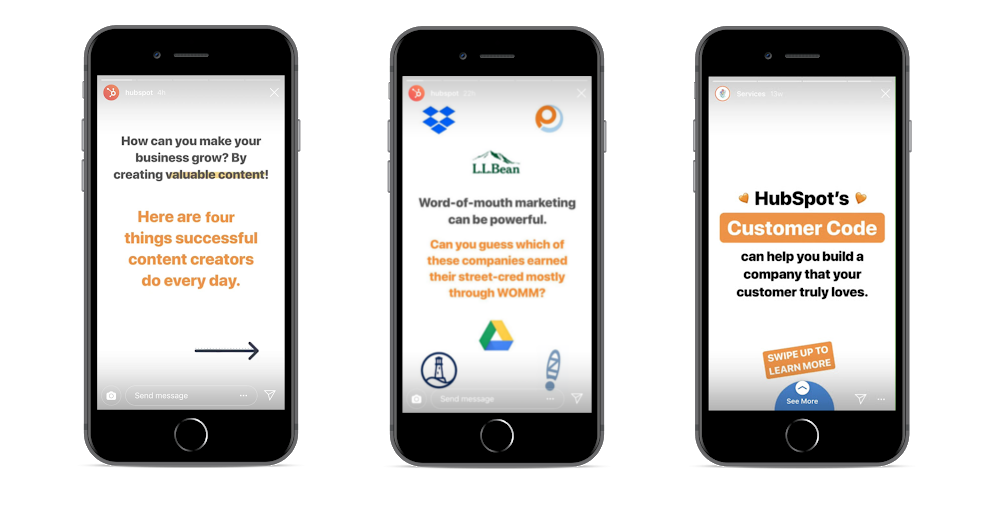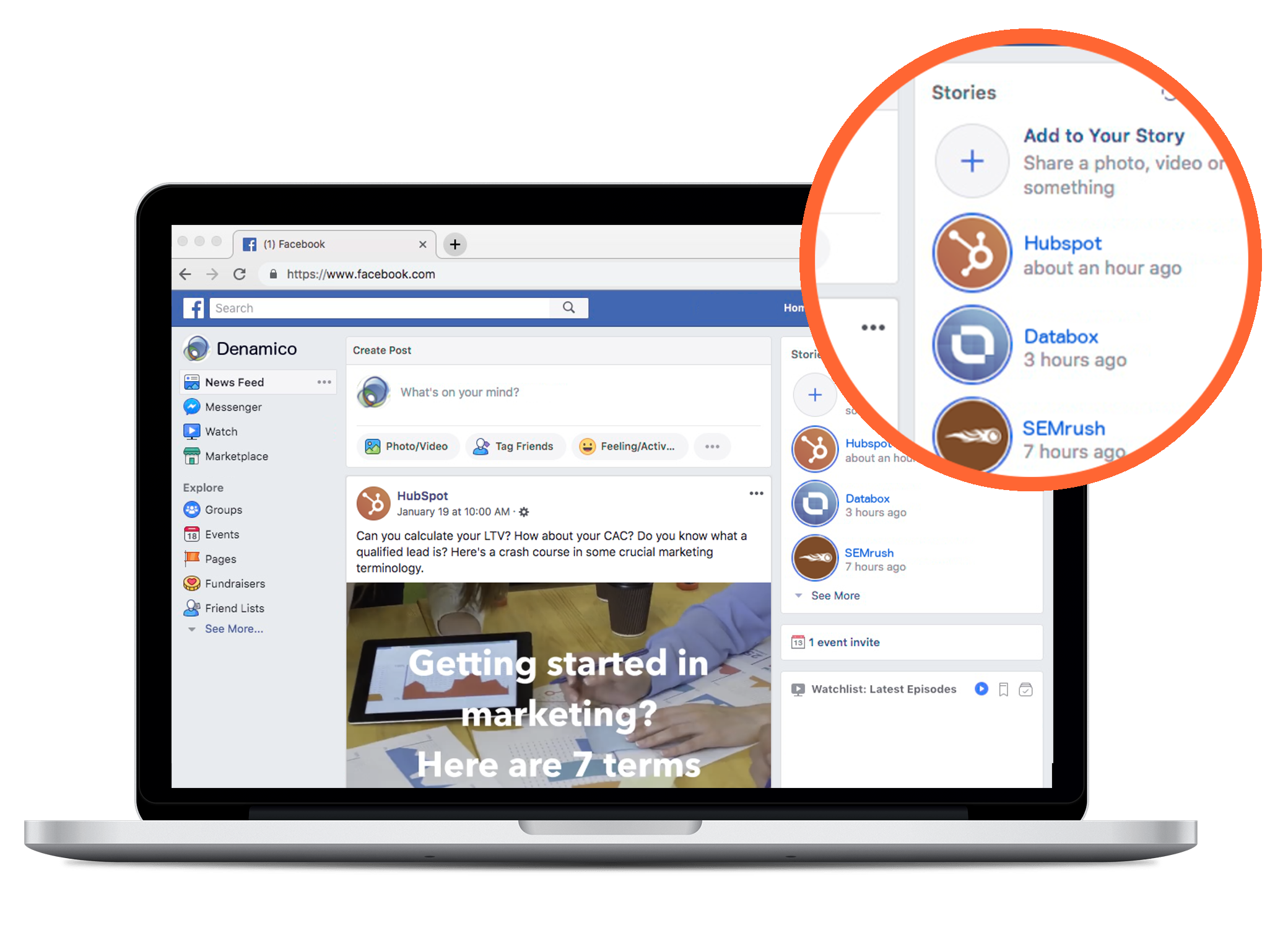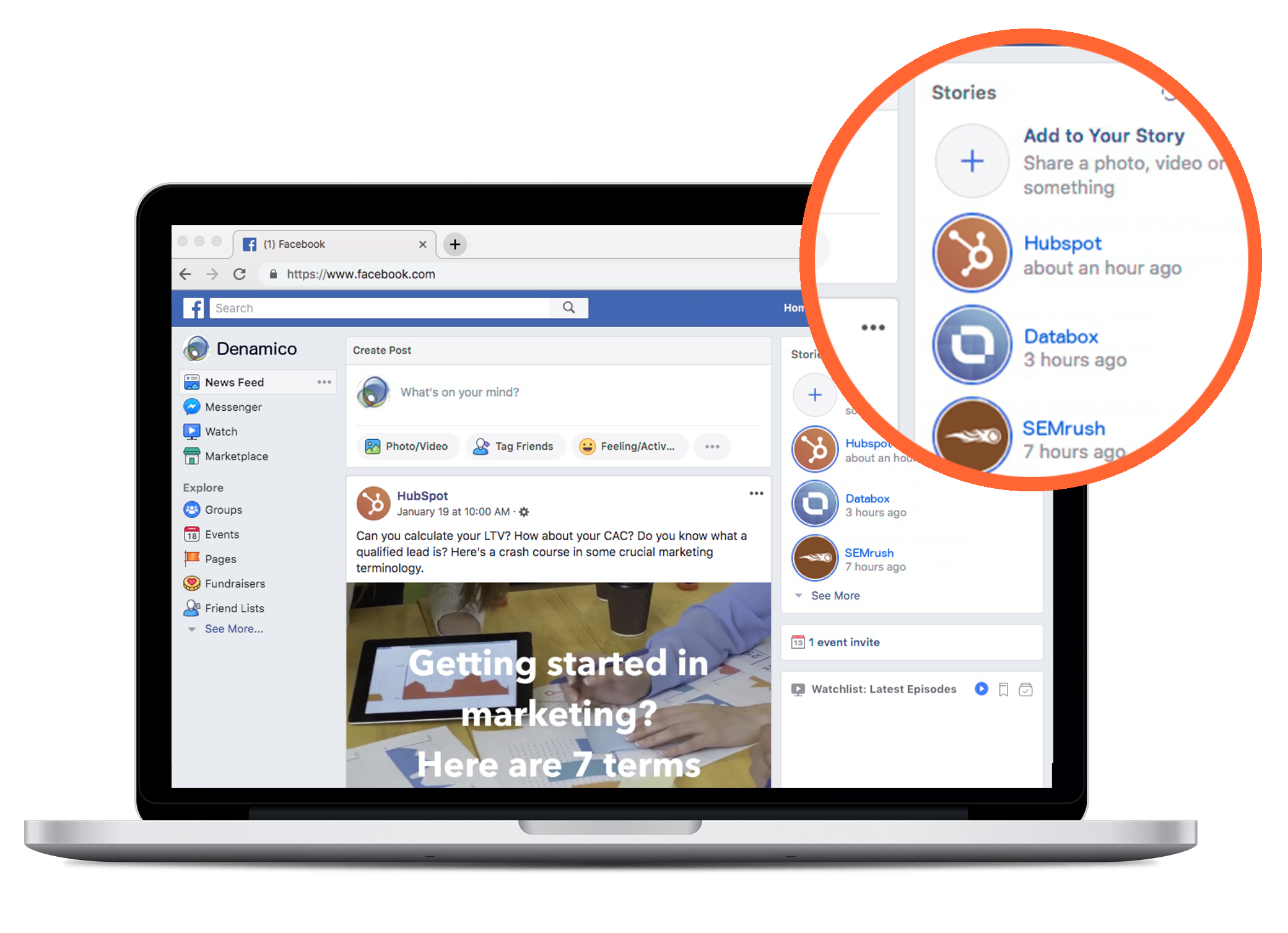Using Facebook and Instagram Stories for Business
With trendsetting brands embracing this new marketing tool, make sure you join the pack while the playing field is still relatively uncrowded.

You may have heard of digital “Stories” on social media platforms, but what are they and how can they be leveraged to promote your business?
As digital marketing continues to evolve, businesses must also evolve, utilizing new ways to visually attract customers to products and services. A quick way to do that is by maintaining business profiles on social platforms and incorporating Stories into your marketing strategy.
Snapchat’s ceiling-smashing Stories feature, introduced in 2013, revolutionized the way that people could interact with their friends and businesses could reach their customers. Later that year, Snapchat surpassed Facebook in number of daily shares with 400 million snaps. Many other social sharing platforms like Instagram and Whatsapp hopped on the bandwagon as quickly as they could and built video sharing functions similar to Snapchat.

What are Stories?
The concept of Stories is pretty simple: a user posts a photo or a video to a platform’s Stories feature. These captured “moments of time” are showcased for only 24 hours, whether other users have seen them or not. From the social media platform’s perspective, it's a rather clever trick to keep people coming back to the app and staying there. From the perspective of promoting your business, it’s a great tool to engage and delight your customers in an approachable, creative way. And, because Stories are only visible for 24 hours after they are posted, they allow you to publish content that is hyper-relevant to your audience during a specific time period or current event.
For example, a home improvement company could include Stories in a social media strategy both in the showroom and on the jobsite. Short video snippets are a great way to demonstrate what it’s like to work with them or to showcase their completed projects. For retailers of any product, from cars to clothing, Stories are a great way to show off new inventory, highlight specific features, and announce sales and other events.
It’s pretty clear that videos are replacing photos as today’s most attention grabbing medium. But the most important medium change is not video upstaging photos, but instead the shift in how quickly can you create and distribute content to your target audience that will engage, capture, and delight them.

Facebook Stories
Facebook acquired Instagram in 2012, although they continue to distinguish themselves as distinctly different social sharing platforms. Instagram introduced their version of Stories in 2016, and Facebook incorporated the coveted feature just a year later.
While Facebook was initially built on users sharing original content (uploading photos and videos, creating notes, etc.), in the past few years it has suffered from a decline in content creation and a rise in sharing outside articles, news, and links. By introducing the Stories feature, not only are users encouraged to create original content — enhancing the consumer experience — but also to use the Facebook app daily in order to see their friends’ Stories.
At the end of 2018, Facebook had roughly 2.32 billion monthly active users and Instagram surpassed 1 billion, a number that continues to grow. While it’s clear Facebook still has a larger user base, it’s shrinking overall. As a result, Facebook is taking a page from Instagram and Snapchat’s book. You might choose to use one platform or both depending on where your target audience spends their time, but no matter which platform is the best fit, the Stories feature is worth exploring.
The Benefits of Using Stories for Your Business
With trendsetting brands embracing this new way to market, it’s imperative that your business joins the pack while the playing field is still relatively uncrowded.
"The biggest benefit of Facebook Stories right now is that hardly anyone is using them,” … “this gives your content a better chance of being seen. You really have first-adopted advantage right now." Carolyn Mann, marketing strategist at Larch & Lake Consulting Inc.
Whether you choose to use Instagram or Facebook, you’ll encounter a similar format but with a platform-distinct flair. You can find group Stories on Facebook, where users can create and add their own content to businesses’ group pages and events. Instagram’s version includes features like adding gifs, polls, stickers, and more to help businesses increase their engagement and reach.
“Users have adopted Instagram Stories with enthusiasm, and businesses of all sizes have followed suit," said Nick Verlaney, social media strategist at DEG Digital. "The key for businesses to use stories effectively is to appear authentic with content."
So how can Stories help your business? Here are our top 5 reasons why Stories are a business boost.
5 Benefits of Using Stories to Promote Your Business
1. Create and post original content with ease
On every platform, Stories are a fast, simple way to create content without too much effort. Within a few seconds, your business will have produced original content ready to post and engage your customers. For small business owners, whose time is already limited, Stories are especially helpful as they bring the company’s products or services to life with just a few minutes of effort.
2. Increase brand awareness through storytelling
Storytelling is one of the best ways to draw attention to your brand, and it’s easy with the use of Stories. Stories help businesses share a snapshot of a day in the life at the company, how their business operates, and company culture through a continuous string of content. Using different post functionalities like inserting polls, GIFs, and notes onto a story, companies can create engaging content and remain top of mind with their target audience base.

3. Take a human-centric approach
By creating unfiltered content on the fly, companies appear more authentic and human. When companies behave more like people, it builds trust and customers are more likely to treat them like their friends, returning day-after-day to consume interesting and relatable content from your brand. For SaaS businesses, Stories create a softer, more human side to a technologically advanced brand.
4. Engage with others in your industry
Following other people or companies in your industry will give you insight into what is going on in your space and help you stay up to date on relevant trends. Sharing helpful content builds your reputation as a thought leader in your industry, and by engaging with others experts, you expand your potential audience of readers through cross traffic.
Our friends at HubSpot do a great job of engaging fellow marketers through their Instagram Stories. HubSpot calls out leading brands, quotes industry influencers, and engages their followers with fun facts, helpful tips, and sharing useful content created by others.
5. Share highly interactive content
By the very nature of social media, the content that you create is easily shareable and highly interactive. Social content is an easy way for your customers to get acquainted with your products and services while also enabling them to share your content with their network.
You can also engage with your customers through posting, commenting, resharing like-minded posts, and creating fun industry and company hashtags for your customers to use and interact with.
If you build it, they will come
It’s evident from this list that there are significant benefits of using Stories as a large business — staying top of mind, announcing limited-time deals, promoting an event, and humanizing your brand.
For smaller businesses, the impact will be limited at first, especially if you don't have a huge online following, but creating content will draw in more followers. The Inbound Marketing Philosophy is built on the idea that useful content will bring in leads. It’s been said, "if you build it, they will come," and nowhere is this adage more applicable than content creation.
Stories: Insulated from the ever-changing algorithms
The hardest part for businesses, big or small, is navigating a platform’s algorithms. These notorious algorithms can hinder a company’s social reach by making it harder for their organic posts to be seen on timelines or dashboards. Despite the algorithms, the Stories feature still has the advantage of being displayed at the top of the screen in both mobile apps and desktop platforms, giving content shared in Stories a boost over feed-based posts.

Tell your business’s story
There are many successful brands on Facebook and Instagram who are taking advantage of the relatively uncharted Stories feature, and they are clearly succeeding. By recognizing the potential of Stories, these brands are benefitting from a relatively uncrowded playing field. Your business could be one of them.
As Pete Caputa, CEO of Databox, says, “In general, consumer brands love Instagram, local businesses obsess over Facebook, e-commerce companies pine over Pinterest, B2B companies love Linkedin, early adopters use Snapchat and no one expects much from Twitter anymore.”
The real key to marketing success is knowing how to use these platforms effectively to be a thought leader in your community and reach your target audience where they already spend their time — on social media. Static content has a hard time engaging today’s consumer, but by embracing visually stimulating social content and leveraging Stories, your company can boost brand awareness and bring in more leads.
Images sourced from screenshots and/or recordings taken of HubSpot's mobile Instagram Stories and desktop version, and Facebook's desktop version of Stories.


